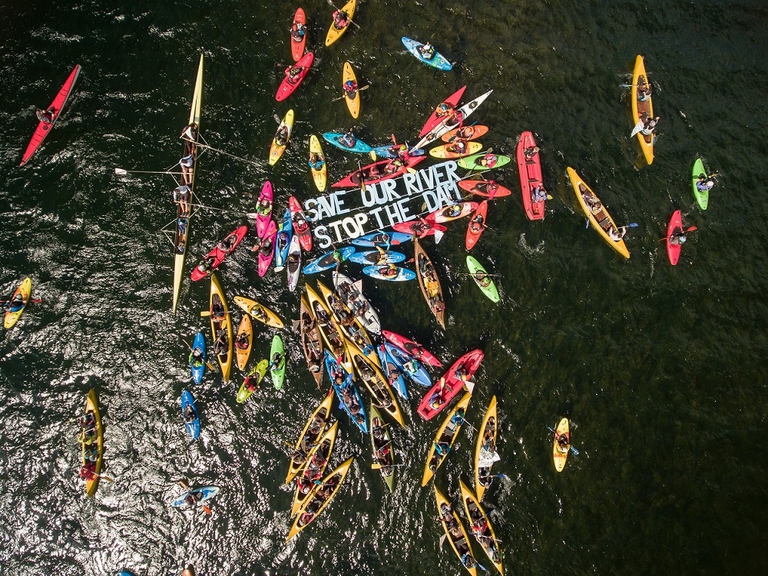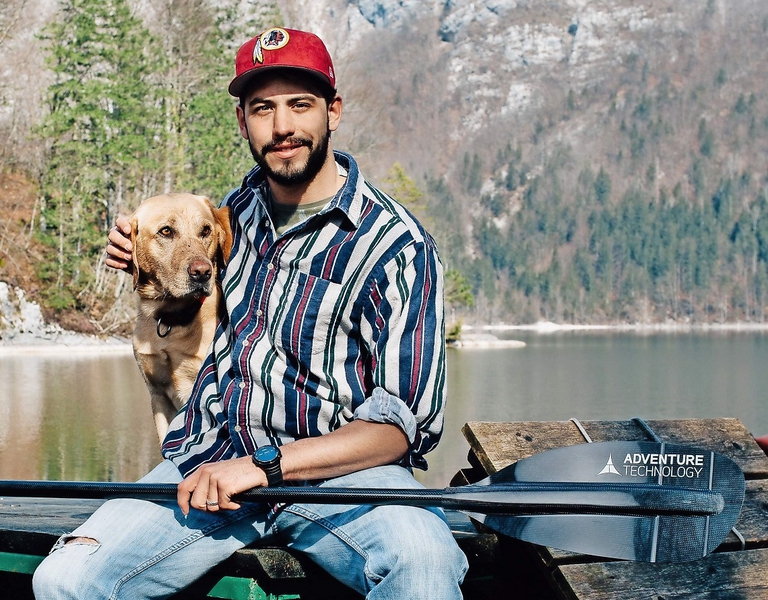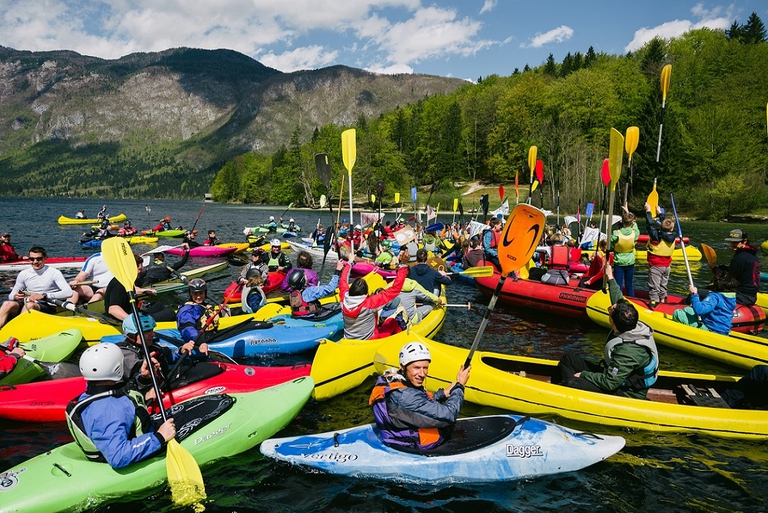
South African court dismisses a major lawsuit by 140,000 Zambian women and children against Anglo American for Kabwe lead poisoning. A setback for affected communities enduring the lasting impact of lead contamination.
A unique caravan of kayakers departed from Bohinji Lake, Slovenia, on 16 April. The group – made of over 60 activists – aims to paddle 18 rivers over the next 35 days, in order to protest against the construction of thousands of dams in the Balkans. The demonstration is part of the international campaign Save
A unique caravan of kayakers departed from Bohinji Lake, Slovenia, on 16 April. The group – made of over 60 activists – aims to paddle 18 rivers over the next 35 days, in order to protest against the construction of thousands of dams in the Balkans.
The demonstration is part of the international campaign Save the Blue Heart of Europe, aimed to protect Balkan rivers and raise public awareness on the risks linked to the construction of 2,700 new dams between Slovenia and Albania.
The group of paddlers, led by former Slovenian Olympic athlete Rok Rozman, will cross Croatia, Bosnia-Herzegovina, Montenegro, Macedonia, and Albania, under the slogan “Save our rivers”. Numerous events are organised along the shores, in order to support their fight against dams.
“This unique activity shows that the Balkan Rivers are more than just suppliers of megawatt hours,” said Ulrich Eichelmann, coordinator of the Save the Blue Heart of Europe campaign. They are lifelines that provide recreational value to people and habitat for species. We need to defend this European natural heritage against the greed of companies and banks for profit”.
All rivers ot be travelled by the activists are threatened by the construction – over the next few years – of dams in 113 national parks, with severe consequences on rivers, the environment and biodiversity.
“When I was a kid my dream was to win Olympic medal in rowing rivers,” told Rok Rozman. “As a grown-up, my foremost goal is to protect these rivers. I didn’t get the medal but I will do everything I can to help saving the rivers on the Balkans”.
One of the rivers threatened by the hydroelectric projects is the Sana River, a watercourse that crosses Bosnia-Herzegovina and home to one of Europe’s rarest fish, the Danube salmon (Hucho hucho).
The protest tour will end on 20 May in Albania, with the handing over of a petition for the protection of the Vjosa River – considered to be Europe’s last wild river – to Albanian Prime Minister Edi Rama.
Siamo anche su WhatsApp. Segui il canale ufficiale LifeGate per restare aggiornata, aggiornato sulle ultime notizie e sulle nostre attività.
![]()
Quest'opera è distribuita con Licenza Creative Commons Attribuzione - Non commerciale - Non opere derivate 4.0 Internazionale.
South African court dismisses a major lawsuit by 140,000 Zambian women and children against Anglo American for Kabwe lead poisoning. A setback for affected communities enduring the lasting impact of lead contamination.
Controversial African land deals by Blue Carbon face skepticism regarding their environmental impact and doubts about the company’s track record, raising concerns about potential divergence from authentic environmental initiatives.
Il progetto della società austriaca Kelag potrebbe compromettere un habitat unico e la sopravvivenza del salmone del Danubio.
Majuli, the world’s largest river island in Assam State of India is quickly disappearing into the Brahmaputra river due to soil erosion.
Food imported into the EU aren’t subject to the same production standards as European food. The introduction of mirror clauses would ensure reciprocity while also encouraging the agroecological transition.
Sikkim is a hilly State in north-east India. Surrounded by villages that attracts outsiders thanks to its soothing calmness and natural beauty.
Sikkim, one of the smallest states in India has made it mandatory for new mothers to plant saplings and protect them like their children to save environment
Chilekwa Mumba is a Zambian is an environmental activist and community organizer. He is known for having organized a successful lawsuit against UK-based mining companies.
What led to the Fukushima water release, and what are the impacts of one of the most controversial decisions of the post-nuclear disaster clean-up effort?










